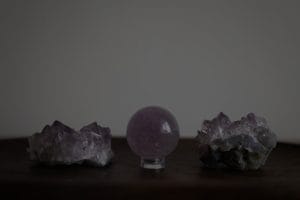**Abstract:**
Revitalize your home with Feng Shui energy tools to create a harmonious environment. This practical guide offers insights into enhancing your living space for better energy flow and well-being.
Understanding Feng Shui: The Art of Energy Flow
Feng Shui, an ancient Chinese practice, focuses on the arrangement of your living space to optimize energy flow. This art is based on the belief that everything has energy, or “Chi,” which can be harnessed for positivity. By understanding Feng Shui principles, you can create a balanced atmosphere that promotes well-being, prosperity, and harmony. The key to effective Feng Shui is not only in the items you choose but also in how they are placed within your home.
The Importance of Energy Tools in Your Home
Energy tools, such as crystals, wind chimes, and mirrors, play a crucial role in Feng Shui. These items can enhance the flow of Chi, helping to eliminate negative energy and attract positive vibes. For instance, placing crystals in specific areas can amplify energy and intentions, while wind chimes can disperse stagnant energy. By incorporating these tools into your home, you can foster an environment that nurtures creativity, love, and prosperity.
Selecting the Right Feng Shui Tools for Your Space
Choosing the right Feng Shui tools requires an understanding of your home’s unique energy. Each room serves a different purpose and should be treated accordingly. For example, in the living room, consider using large crystals or a vibrant painting to encourage social interactions. In the bedroom, softer elements like soothing colors and calming symbols can promote restful sleep. Always ensure that the tools you select resonate with your personal style and intention for the space.
Strategic Placement: Enhancing Energy Flow
Placement is key in Feng Shui. Items should be positioned to facilitate the natural flow of energy. For instance, mirrors can be used to reflect light and energy, but they should never face the front door, as this can push energy out of the home. Similarly, plants can be placed in corners to soften sharp angles and create a welcoming atmosphere. Understanding the Bagua map, which outlines energy centers in your home, can guide you in placing your Feng Shui tools effectively.
Creating a Balanced Environment: The Role of Colors and Elements
Colors and natural elements are integral to Feng Shui. Each color corresponds to different emotions and energies. For example, green promotes growth and renewal, while blue encourages tranquility. Incorporating these colors through paint, decor, or accessories can significantly impact the energy of your home. Furthermore, integrating the five elements—wood, fire, earth, metal, and water—can create a balanced environment that supports your goals and aspirations.
Maintaining Your Feng Shui: Regular Updates and Cleansing
Feng Shui is not a one-time task; it requires ongoing attention and maintenance. Regularly assess the energy in your home and make necessary adjustments. This might involve cleansing your crystals, rearranging furniture, or even decluttering to allow for better energy flow. Keeping your space vibrant and reflective of your current needs ensures that your home remains a sanctuary of positivity.
Conclusion: Transform Your Living Space with Feng Shui
Revitalizing your home with Feng Shui energy tools is a powerful way to enhance your life. By understanding the principles of energy flow and strategically selecting and placing tools, you can create a harmonious environment that fosters growth, happiness, and prosperity. Embrace the journey of Feng Shui, and watch as your living space transforms into a sanctuary of positive energy.










